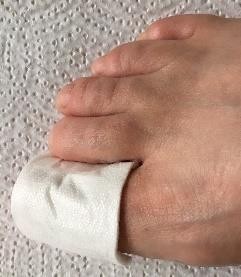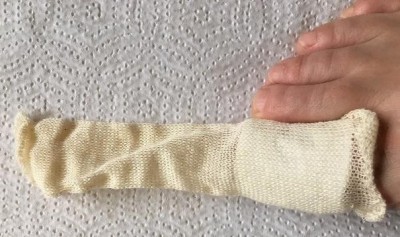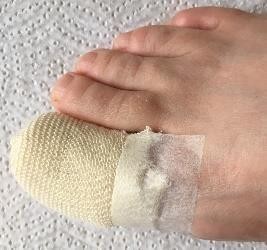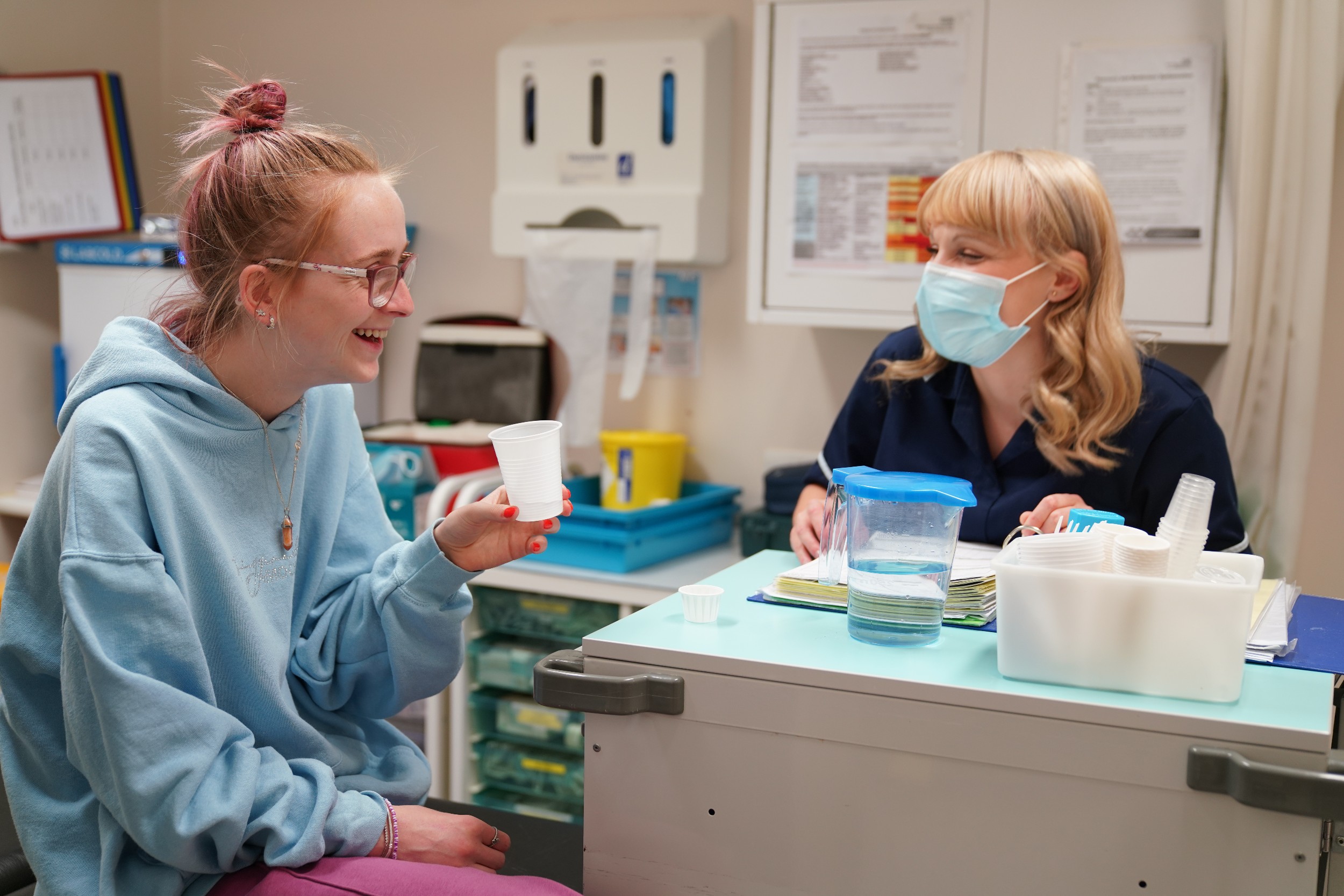Risks and benefits
Nail surgery is a surgical procedure that is used to treat ingrowing, painful thickened or infected toe nails. The treatment involves the use of local anaesthetic and either the whole or part of the nail is removed and a chemical (phenol) is usually applied to the nail bed which is intended to stop that section of the nail growing back.
Patients seldom have problems following nail surgery, however all treatments/operations carry risks. You need to carefully consider the severity of your problem against the risks and benefits of nail surgery.
1. Intended Benefits
- Reduction in pain.
- Removal of the troublesome nail (whole or part).
- Return to usual activities.
2. What alternative treatments are available?
- Referral via GP for the procedure to be carried out under general anaesthesia.
- Treatments to try and help manage the nail problem.
- Self-care.
- Correctly fitting footwear.
- No treatment.
3. What exactly will happen?
- The toe will be anaesthetised. Rarely the toe may not go numb. If this happens other treatment options will be discussed with you.
- Once the area is numb, a tight band (a tourniquet) is applied to the toe.
- The whole/part of the toe nail is removed and a chemical ( phenol) may be applied to the nail bed.
- A dressing is applied to the toe and advice given regarding post operative care.
- You will undertake these post operative dressings yourself. We will supply the dressings.
- You may experience some pain/bleeding/bruising/inflammation/ tingling, or pins and needles to the area.
- The treated area will take around 4-12 weeks to heal.
- You will require someone to drive you home.
- Bring with you any medication you may need e.g. inhalers, angina sprays.
- Bring with you open toed footwear.
4. Risks of nail surgery
- Complications may include infection, delayed healing, re-growth of the nail, allergic reaction, toxic reaction, anaphylaxis, prolonged numbness , nerve pain.
- There may be some permanent damage or temporary imperfection to the nail such as discolouration or change in texture/shape.
- Blistering to the surrounding tissue.
- Nail loss.
Preparing for Minor Surgery
1. Can I bring someone with me?
- It is advisable to be driven to the surgery appointment by someone who can drive you home afterwards.
- You may be able to bring one person with you into the treatment room. If you are under 16 this must be the person with parental responsibility
- For safer working practice during Covid pandemic, it is preferable to restrict the number of people in the treatment room
- Anyone who is pregnant should not be in the treatment room (for nail surgery).
2. How long will it take?
- On average, treatment takes one hour.
3. What will happen?
- We will check you understand the procedure to be performed and you will be asked to give consent.
- A local anaesthetic will be given.
- The area will be tested to check it is numb and then the procedure will be undertaken.
- A dressing will be applied and you will be given appropriate advice.
- You will be given advice on how to undertake the redressing. You will be supplied with the dressings. A podiatrist will contact you in the post operative period to check the healing progress you may be asked to send in photographs of the toes for this.
4. Additional Information.
- If you arrive late for your appointment, we may be unable to treat you.
- You will need to make your own appropriate travel arrangements as you will not be able to drive home
- Ensure all nail varnish/acrylics are removed prior to your appointment
- Take your prescribed medication as usual and you may eat and drink as normal.
- Ensure you bring a list of your medication to the appointment.
- Bring inhalers/sprays to the appointment
- Avoid alcohol for 24 hours before and after surgery.
- Bring open toed footwear/sandals to the appointment
- It is advisable to wear a short sleeved top as your blood pressure may be monitored during the procedure.
- You may need to take some take time off from work/school.
- You should rest with the foot elevated for the remainder of that day.
- You will need to avoid active sporting activities including swimming until advised otherwise.
Dressing Information Following Nail Surgery
Following nail surgery it is important you follow the advice below.
You will have been issued with a pack of dressings, this contains 21 Melolite dressings, length of tubular bandage and micropore tape; there are the dressings for you to use for you to use for the first 3 weeks after surgery. The pack also contains 21 Softpore dressings for you to use weeks 4-6 after surgery. Bandage is not needed with a Softpore dressing.
Your dressing must be changed daily unless advised otherwise.
Leave dressing on when showering or bathing and then follow dressing instructions.
- Soak your foot in a bowl of warm salty water (dilution is 1 tablespoon of salt in 1 pint of water).
- If the dressing is sticking ease off gently in the water.
- Soak the toes for a maximum of 5 minutes.
- Dry carefully on a clean paper kitchen roll towel and throw this away.
- Apply a clean dressing (see overleaf for our guide).
- For 2-3 days after surgery you will find the wound will produce a discharge, this is quite normal and is not necessarily an infection.
- Wear open toed footwear until your toe(s) has healed.
- Refrain from sport until your toe is healed.
- We will contact you within the next few weeks to check your progress.
What are the signs and symptoms of an infection at my surgical site?
- Increased thicker discharge
- Increased pain
- Odour
- Redness going up the toe
- Swelling
If you think you are developing an infection or have any concerns, please contact our main clinic at Fenton health centre on the number below:
0300 123 0991 Option 5 Email photographs to: foot.
If you have concerns out of hours which will not wait, please contact your GP surgery / walk in centre.
Dressings for the first 3 weeks:
- Wash your hands.
- Bathe your toe in salt water as directed.
- Dry the foot well with kitchen/paper towel.
- Open the Melolite dressing (you will see that this is the same on both sides). Place this onto the surgical site.

- Cut a section of the tube gauze, about twice the length of the toe and pop this over the toe

- Twist the tube gauze and pull it back over the toe, the top of the toe should not be visible.
- Fix the tube gauze in-place with the adhesive tape.

Dressings for weeks 3 to 6
- Wash your hands
- Bathe your toe in salt water as directed
- Dry the foot well with kitchen/paper towel
- Open the Softpore dressing. Place it onto the toe ensure that the tape is not over the surgical wound.

